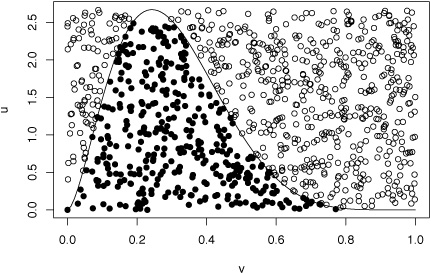The Fundamental Theorem of Simulation
Simulating $X \sim f$
is equivalent to simulating
$(X,U) \sim \mathscr{U}\{(x,u): 0<u<f(x)\}$
The proof is trivial.
One thing that is made clear by this theorem is that we can generate X in three ways:
- first generate $X \sim f$, and then $U|X=x$, but this is useless because we already have $X$ and don't need $X$
- first generate $U$, and then $X|U=u$, that is just the accept-reject algorithm
- generate $(X,U)$ jointly, which will eventually turn out be the smart idea because it allows us to generate data on a larger set were simulation is easier, and then to use the pair if the constraint is satisfied. http://academic.uprm.edu/wrolke/esma5015/fund.htm
I want to understand in last step,
we will sample $X$ using any method of MCMC and $U \sim U[0,1]$ and then take the sample of $X$ only which interested to find distribution for it.
Another question, Is this theorem related to latent variables?

